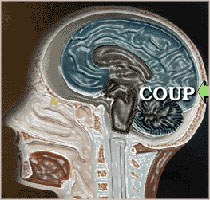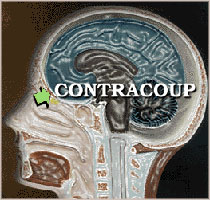Brain Injury Mechanisms Internally
While we often picture the brain being injured as a result of the external force on the head, it is what happens inside the skull, which causes the “closed head injury”. The term “closed head injury” means an injury to the brain where the skull is not broken or penetrated. Even without a blow to the head the brain injury mechanisms may stop working properly.
While there are many complex interrelationships which explain the internal injury, the two most significant causes of injury to the brain are the “contact” of the head with a blunt object and the “inertia” which may occur as a result of a rapid acceleration or deceleration of the brain. The terms “impact” and “shear” are also often used to differentiate the internal mechanisms of injury between the contact and inertial causes of injury.
In using the term “impact injury” it is not the impact with the head with something that is being described, but the impact of the brain with the hard, often sharp interior of the skull. The term “contact phenomenon” is used to describe the sequence of events which occurs when the energy of the impact of the head with something is transferred to the brain. These “contact phenomenon” include deformation of the skull and shock waves which emanate at the speed of sound from the point of impact throughout the brain.
Source: Greenfield’s Neuropathology, ©1997, Arnold, page 199.
Coup – Contrecoup Brain Injury
Injury from contact forces often occurs in two places – the site of the initial impact of the brain with the skull and the diametrically opposite part of the brain. This happens because of the rebound of the brain from the initial impact with the skull. To describe this phenomenon, the terms coup and contrecoup are used.

